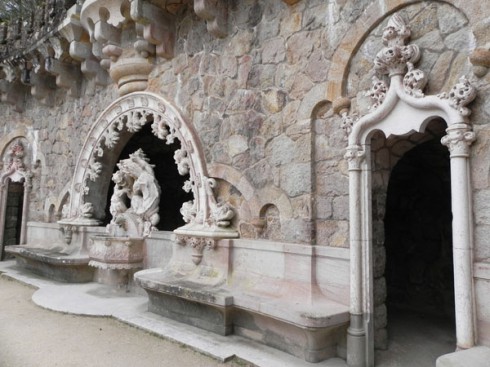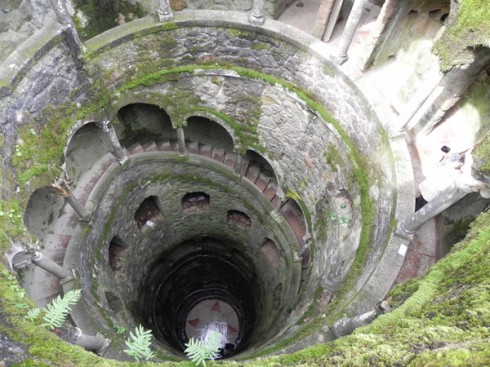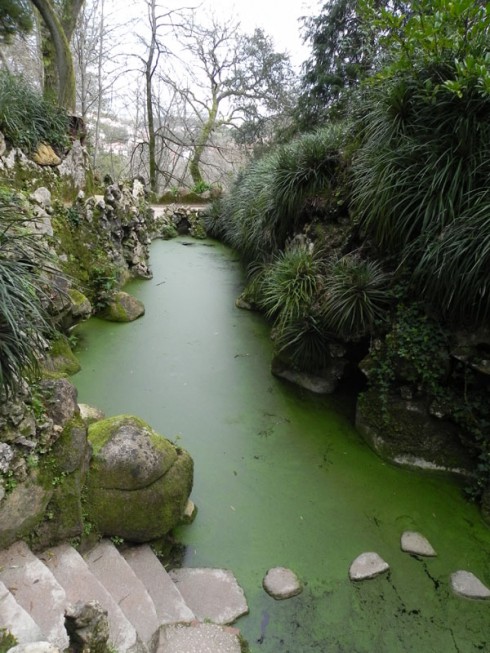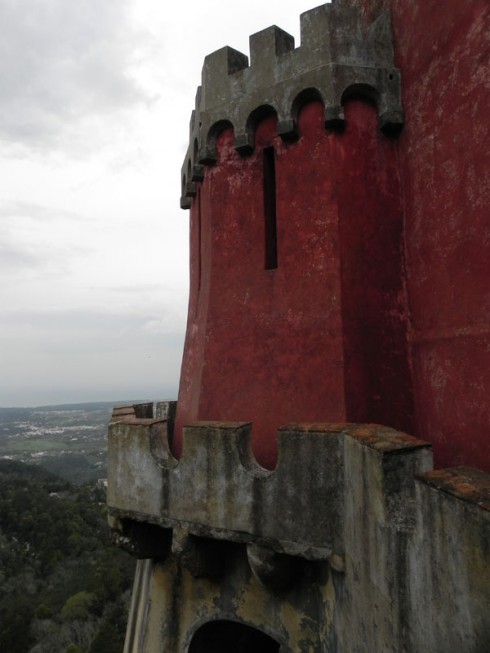At a Spaniard friend's suggestion, Katie and I took a day trip out to Sintra, about a 45 minute train ride from Lisbon. The views on the journey there do nothing for building anticipation for the charms that await in Sintra. You pass through dense, drab, poverty-stricken outskirts. Mostly row after row of old apartment buildings and temporary shantytown-esque plots. I found myself grateful that the views were part of the trip. The world is not pristine. These places are more real and common than the comfortable places. These types of conditions are actually more of an indicator of how much of the world lives. And for yet another of a thousand moments during travels this year, I was deeply grateful for the time and ability to see more of the immensity of this world--the nice things and the poor, the ugly and the beautiful. I was seated directly across from a man dressed in rags with hands so calloused and dirty he looked as if he had never spent a day not digging or rooting around for a living. He had a perpetual serene smile and was obviously intrigued by the joy of the little girl running around in the car (maybe because he was distracted by her I felt it easier to stare, even though I tend to do it too obviously sometimes--people are simply too interesting to not contemplate!). This scenario of over-crowded, mass-built apartment buildings, often filled with immigrants, are a common issue in the outskirts of large European capitals. They have to be housed somewhere so the government throws up development, with little city planning or any sort of public spaces or municipal buildings in place. It is interesting to note the patterns of immigration to Europe. I haven't studied it much, but Lisbon seemed to have a lot from Africa and Brazil, all places where they had formerly colonized. Spain has a lot from South America, former colonies. England has a lot from India, a former colony. The influences brought back from the colonies leave heavy impact on the local culture in the motherland. Portugal's food had some Indian influence, where I believe they also had a stake in colonizing. I've heard that England's main dish is actually an Indian dish. We were in Lisbon for the culmination of Carnival which meant that the Brazilian neighborhood was the place to be, with bars filled with Brazilian music. Back to Sintra...We arrived on the train and walked out onto the main street. We didn't have a map and had yet to spot an tourist office. In our deciding which way to go, we must have made our lack of direction a little too obvious because a British lady approached us and said in her lovely accent, "Could I help you? You look utterly lost." She was an expat there for 20 years as an English teacher. Her directions sent us right where we needed. She remarked that she wanted to go with us, if only she didn't have class. "If my dead husband were here, he'd drop everything to walk you girls up the mountain. That's just how he was." We gave a sympathetic chuckle, because what else can you say to that? Our brief chat was interesting, especially hearing of her journey on el camino from Portugal to Santiago.
Sintra almost felt like a small Ozark town: lush, mountains, and old buildings that wound up the road up the mountain. Some were even little houses turned into restaurants. We ate at one such place, with once again, fantastic food as with every place we ate in Portugal. It had a rustic charm, but not like "old Europe" charm, more like a newer-old, almost a little bohemian. My sandwich was packed with pear, turkey, cheese and a balsamic dressing.
The first palace we visited was Quinta da Regaleira. This was recommended to me by a teacher at my school who described it as a "fairy castle." Well said. Because you can read the history in the Wikipedia link, I'll save you the details. The main pleasure was it's uniqueness to any place I've ever been. In traveling, you can see castles that are pretty with decorations, some churches have critical turn-in-the-trade architecture, some palaces are so studded with wealth it's hard to comprehend. However, this one, while not so much decorated on in the inside or even an impressive display of wealth, had...quarks. One room had solid walls of books with a mirror around the edge, giving you the sensation that the platform in the middle of the floor was floating. The guidebook said there were connections to the Templars and that the grounds/palace were designed in such a way to "distract the devil from the treasures with pleasures to mislead him." This also had ties to Wagner's Black Swan so the pond out front was outfitted with its own pair. The best part is that outside among the chapel, statues, and gardens, there are subterranean tunnels. One that started behind a statue in the wall led to a tower that had a secret door at the top, and led down to a pond where you could walk across stones in the water.
This disturbance in the algae was caused by a little kid from a class falling in right in front of me. I tried so hard to suppress a laugh. Thankfully it was only about waste deep.
Our next stop was the Palácio Nacional da Pena. Its mountaintop seat offered beautiful views of the valley and the Moorish fort just across the way. It had a whimsical, romantic, dainty style with every inch covered in color and tiles. That's what I like about the Portuguese: a unabashed compulsion to cover any and everything with decoration, color, and craft. The furniture and decorations were all still in place and made me wonder, "Who, again, are these Portuguese?" It's not a country whose monarchy or history gets much studied attention, but they had something good going to build such ornate and delightful places. Sadly, taking photos was not allowed inside.






